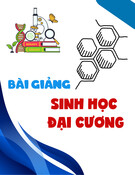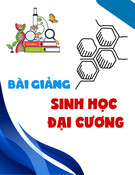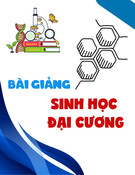
HPU2. Nat. Sci. Tech. Vol 03, issue 02 (2024), 3-9.
HPU2 Journal of Sciences:
Natural Sciences and Technology
Journal homepage: https://sj.hpu2.edu.vn
Article type: Research article
Received date: 06-01-2024 ; Revised date: 17-02-2024 ; Accepted date: 04-3-2024
This is licensed under the CC BY-NC 4.0
3
Hydrothermal synthesis of CdTe quantum dots
using ammonia as a reducing agent
Jung Hoon Song
a
, Thi-Phuong Nguyen
b
, Duy-Khanh Nguyen
c
, Xuan Bach-Nguyen
c
,
Phuong-Nam Nguyen
c
, Sinh-Hung Nguyen
c
, Van-Tuan Mai
d
, Phuong-Uyen Pham
c
,
Hai-Yen Vu Thi
c
, Xuan-Dung Mai
c
*
a
Mokpo National University, Muan-gun, Republic of Korea
b
Pho Moi high school, Bac Ninh, Vietnam
c
Hanoi Pedagogical University 2, Vinh Phuc, Vietnam
d
Electric Power University, Hanoi, Vietnam
Abstract
Water-soluble CdTe quantum dots (QDs) have been applied in various fields, such as
photoluminescent imaging, labeling agents in immune analysis, heavy metal ion sensing, and solar
cells. The synthesis of CdTe QDs has relied vastly on reactions between Cd
2+
and Te
2-
ions in the
presence of mercapto ligands. Te
2-
ions are usually formed in situ in the synthetic solution by reducing
tellurite ions with hydride salts, such as NaBH
4
which gives rise to the emission of highly explosive
hydrogen gas. Herein, we report a novel method to synthesize CdTe QDs by using ammonia as a
reducing agent. We demonstrate that under hydrothermal conditions, ammonia can reduce tellurite
forming telluride ions which react with cadmium ions in the presence of glutathione forming CdTe
QDs. The resultant QDs exhibited high photoluminescence and resolvable absorption. The synthetic
method demonstrated herein could reduce the cost of CdTe-based quantum dots for rapid deployment.
Keywords: Hydride-free, hydrothermal, CdTe quantum dots, water-soluble, ammonia
1. Introduction
Because CdTe bulk semiconductor has a bandgap of 1.43 eV it allows one to tune the emission
colors of CdTe quantum dots (QDs) in the visible and near-infrared regions based on the quantum
confinement effects [1]. By adopting an aqueous synthetic method that was successful in preparing
water-soluble CdS QDs A. Henglein and co-workers prepared CdTe QDs by the reaction between
*
Corresponding author, E-mail: xdmai@hpu2.edu.vn
https://doi.org/10.56764/hpu2.jos.2024.3.2.3-9

HPU2. Nat. Sci. Tech. 2024, 3(2), 3-9
https://sj.hpu2.edu.vn 4
Cd(ClO4)2 and Na2Te in the presence of hexametaphosphate stabilizer [2]. However, the absorption
spectra of QDs were featureless and the QDs only showed weak photoluminescence in the excess of
Cd2+. T. Rajh and co-authors modified the synthetic protocol reported by A. Henglein by adding 3-
mercapto-1,2-propanediol (thioglycerol) as a co-stabilizer. They demonstrated that it could obtain
CdTe QDs with a narrow-size distribution, well-resolved excitonic peak, and high photoluminescence
[3]. Those early successes promoted numerous works demonstrating the use of different mercapto
ligands in the synthesis of high-quality CdTe QDs that have narrow-size distribution and high
emission quantum yields [4]–[7]. The synthetic protocol was further adopted to prepare other
chalcogenide MX (M= Zn, Cd, Pb, Hg, Ag, Cu; X=S, Se, Te) QDs [8], [9], metal-doped CdTe QDs
[10]–[13], and CdTe alloyed or core/shell QDs [14]–[18].
The formation of CdTe QDs is believed to undergo three states: monomer accumulation,
nucleation, and growth [19]. A very fast monomer accumulation to facilitate instant nucleation and
slow growth of nanocrystal seeds are important to narrow the size dispersion of resultant QDs.
Practically, water-soluble cadmium salts and Te2- precursors are usually used to synthesize high-
quality CdTe QDs because Te2- and mercapto ligands react quickly with Cd2+ ions to form complexes
that coagulate to create QDs seeds in the subsequent heating process [14]. However, because Te2-
precursors are flammable (H2Te) or easily oxidized in ambient conditions, tellurite salts have been
used widely to prepare CdTe QDs by a one-pot procedure [16], [19]–[21]. The "one-pot" characteristic
is enabled by a parallel reaction between the tellurite salts and a strong reducing agent such as NaBH4
forming in-situ Te2- ions. The use of hydrides brings about other safety requirements to deal with
hydrogen emissions. To solve this issue, there have been several reports using ascorbic acid [22], [23],
mercaptopropionic acid (MPA) [24], [25], and glutathione (GSH) as reducing agents instead of
hydrides. In this study, we have demonstrated the use of ammonia as both a reducing agent and pH
maintainer to synthesize CdTe QDs by a hydrothermal method. The results demonstrated herein offer
a cost-effective method to prepare water-soluble and highly photoluminescent CdTe QDs by cutting
down hydride salts.
2. Experimental section
2.1. Chemicals and facilities
Cadmium chloride hemipentahydrate (99.95%), zinc chloride (99.99%), sodium tellurite (99.9%),
reduced glutathione (GSH, 98 %), acetone (HPLC grade), and ammonia solution (25% in water) were
purchased from Aladdin chemicals and used without any purifications. Double-distilled water was
freshly prepared in the laboratory and used as a synthetic solvent. Hydrothermal reactors were 100 ml
PPL-liner autoclave and a Binder ED115 electric oven was used as a temperature-controlled
environment.
2.2. The synthesis of CdTe quantum dots
Mixture solution A was made by mixing 25.5 ml of CdCl2 solution (0.02 M), 2.5 ml of ZnCl2
solution (0.02 M), 3 ml of NH3 solution (25%), and 0.19 g of GSH dissolved in 45 ml of water.
Solution B was made by dissolving 0.02 g of Na2TeO3 in 10 ml of NH3 solution. B was heated at 70oC
for 1 hour followed by being transferred into A and the total solution was placed in a PPL autoclave.
All processes above were conducted in an argon-filled environment. The hydrothermal treatment was
conducted at 120oC in an electric oven. After being cooled to room temperature, CdTe QDs were

HPU2. Nat. Sci. Tech. 2024, 3(2), 3-9
https://sj.hpu2.edu.vn
5
precipitated by adding acetone and collected by centrifugation at a speed of 5000 rounds per minute
for 7 minutes.
2.3. Characterizations
UV-vis absorption spectra were carried out on a UV-2450 (Shimadzu) spectrometer while the
photoluminescent (PL) spectra were measured on a Nanolog (Horiba) spectrometer. Transmission
electron microscope (TEM) images of CdTe QDs were obtained on a JEM 2100 microscope while the
X-ray diffraction pattern (XRD) of QDs was carried out on a D8 advance X-ray diffractometer. FTIR
spectrum of CdTe QDs was measured using an FT/IR-4600-type A FT-IR spectrometer.
3. Results and discussion
The X-ray diffraction pattern of CdTe QDs is shown in Figure 1.a. The pattern exhibits two broad
diffraction peaks near 27
o
and 46.3
o
, and a shoulder at about 50.7
o
. The first broad peak near 27
o
is
close to the CdTe, ZnTe, CdS, and ZnS (111) plans. Among those possible crystal phases, CdS and
ZnS were taken into account because under hydrothermal conditions S
2-
ions could be in situ formed
via the decomposition of GSH molecules. The peak at 46.3
o
could be assigned to the (311) plan CdTe
or the (200) plan of ZnS while the shoulder at 50.7
o
was attributed to either the (311) of ZnTe or CdS.
The fact that the diffraction peaks could not be assigned to a single crystal phase indicates the QDs
were in a mixed phase such as a CdZnTeS alloyed structure that is obtained by heating a mixture of
Cd and Zn salts, tellurite, mercapto ligands, and hydride [14], [15], [26]. On the other hand, the
broadness of the diffraction peaks was partial due to the small size of QDs. TEM images shown in
Figure.1b indicate that CdTe QDs were fairly spherical with a diameter varying from 4.5 to 10 nm. In
addition, QDs were individual in TEM images indicating that QDs were stable colloids. XRD and
TEM results show that crystalline CdTe QDs were successfully synthesized. The FTIR spectrum of
CdTe QDs shown in Figure 1.c exhibited a broad band at 3250 cm
-1
, a peak at 2972 cm
-1
, a double
peak at 1568 and 1628 cm
-1
, and a sharp peak at 1390 cm
-1
. The broadband was attributed to vibrations
of polar bonds such as N-H and O-H in GSH molecules. The peak at 2972 cm
-1
was assigned to the C-
H stretching in methylene groups of GSH while the double peak was due to the amide group in GSH
[16]. The sharp peak at 1390 cm
-1
could be attributed to the bending vibration of C-NH bonds in GSH
[27]. Those features show that the QDs were capped with GSH molecules. Additionally, the
characteristic peak of the S-H bond at about 2526 cm
-1
[19] was absent in the FTIR spectrum
indicating that GSH molecules bond to CdTe QDs via the thiol group.
Figure 1. a) XRD spectrum, b) TEM image, and c) FTIR spectrum of CdTe quantum dots obtained after 90
minutes of hydrothermal treatment. In a) the standard XRD peaks of CdTe (JCPDS#: 15-0770), CdS (JCPDS#:
47-1179), ZnTe (JCPDS#: 15-0746), and ZnS (JCPDS#: 05-0566) are indicated for comparison.

HPU2. Nat. Sci. Tech. 2024, 3(2), 3-9
https://sj.hpu2.edu.vn
6
Figure 2. a) Pictures of CdTe quantum dots solutions under daylight and b) under UV light (365 nm). c) The
absorption and d) photoluminescent spectra of CdTe quantum dots obtained after 60 minutes (60 m) or 90
minutes (90 m) of hydrothermal treatment.
The optical properties of CdTe QDs are summarized in Figure 2. The resultant QDs were soluble
in water and exhibited strong emission in the yellow region (Figure 2.a-b). The absorption spectra
(Figure 2.c) of QDs obtained at different periods of hydrothermal treatment show an adsorption
shoulder at about 400 nm but the excitonic peak was not observed. In fact, when the hydrothermal
temperature increased to 160
o
C, the shoulder red-shifted to about 410 nm (results are not shown). In
the conventional synthesis in which NaBH
4
is used as a reducing agent, we could obtain CdZnTeS
alloyed QDs with a well-resolved excitonic peak which gradually red-shifts as increasing reaction time
[16]. Because the sharpness of the excitonic peak is governed by the narrowness of QDs size
distribution the absence of excitonic peaks in Figure 2.b coincided with the broadness in the diameter
of QDs seen in Figure 1.b and infers that the current method provides QDs with a lower size-
distribution as compared with conventional method [16]. PL spectra excited at 400 nm are shown in
Figure 2.d. The emission spectra were broad, maximized at about 570-576 nm which was about the
onset point of the absorption spectrum seen in Figure 2.c. This was due to the energy transfer among
QDs of different sizes in the QDs solution. Although the size distribution of CdTe QDs was not very
narrow, highly photoluminescent CdTe QDs were obtained probably due to the inclusion of Zn on the
surfaces [16], [19]. In the next part, we will discuss the formation mechanism of CdTe QDs upon
hydrothermal treatment.
In conventional synthesis, a mixture solution containing Cd
2+
, TeO
32-
, mercapto ligands, and
NaBH
4
is heated either by refluxing or hydrothermal treatments [16], [19], [28], [29]. The formation of
CdTe QDs relies on the reaction between Cd-mercapto complexes and Te
2-
ions, which are formed in
situ by reducing TeO
32-
with NaBH
4
. There have been some reports about replacing hydride salts by
other reducing agents. In an early study, S. R. Stürzenbaum and co-workers could obtain green-
emitting CdTe QDs by exposing earthworms to soils spiked with CdCl
2
and Na
2
TeO
3
and the authors
reasoned the formation of QDs to be due to the reduction of Na
2
TeO
3
by GSH [30]. Similarly, M.
Shen attributed the formation of CdTe QDs by refluxing a mixture of CdCl
2
, Na
2
TeO
3
, 3-
mercaptopropionic acid (MPA), and NaOH to the reduction of Na
2
TeO
3
by MPA [25].
In this study, we heated a mixture of CdCl
2
, Na
2
TeO
3
, GSH, and ammonia. GSH and ammonia
were possible reduction agents in this system. Based on the standard redox potential of chalcogenides
the potential of TeO
32-
is calculated to be about -0.58V versus the standard hydrogen electrode (vs.
SHE) [31], see the half-reaction (1). The redox potential of mercapto ligands was reported to be about

HPU2. Nat. Sci. Tech. 2024, 3(2), 3-9
https://sj.hpu2.edu.vn
7
-0.4V vs. SHE [32] in alkaline solution which is more positive than the potential of TeO
32-
. Therefore,
GSH cannot reduce TeO
32-
to Te
2-
at the standard conditions. However, the works reported by S. R.
Stürzenbaum [30] and M. Shen [25] mentioned above indicate that GSH can reduce TeO
32-
in
biological systems or at higher temperatures. Under hydrothermal conditions as in our synthetic
method, GSH could reduce TeO
32-
forming in situ Te
2-
ions. Considering half-reaction (2) shown
below, the redox potential of N
2
/NH
3
is -0.74V vs. SHE [33] which is more negative than GSH and
makes the reduction of tellurite (reaction 3) to be thermodynamically favorable. Likely, in our study,
NH
3
was the main agent to reduce tellurite resulting in situ Te
2-
ions for the formation of CdTe QDs as
illustrated in Figure 3.
Figure 3. A tentative formation mechanism of CdTe quantum dots by the reaction between Cd-GSH complex
and in situ formed telluride ions.
2 2
3 2 1
3 6 6 0.58TeO H O e Te OH E V
(1)
2 2 3 2
6 6 2 6 0.74N H O e NH OH E V
(2)
2 2
3 3 2 2
2 3 92.64NH TeO Te H O N G kJ
(3)
4. Conclusions
Water-soluble, highly photoluminescent CdTe quantum dots were successfully prepared by
hydrothermal treatment mixtures of CdCl
2
, ZnCl
2
, and Na
2
TeO
3
in ammonia solutions. The QDs were
crystalline in a CdZnTeS alloyed structure. The QDs were spherical colloids with a diameter ranging
from 4.5 to 10 nm. Based on thermodynamic calculations we deduced that ammonia can reduce
tellurite (TeO
32-
) ions to telluride (Te
2-
) ions for the formation of QDs. The results demonstrated herein
suggest new methods to prepare cost-effective telluride-based quantum dots.
References
[1] L. Zou et al., “Ultrafast synthesis of highly luminescent green- to near infrared-emitting CdTe nanocrystals
in aqueous phase,” J. Mater. Chem., vol. 18, no. 24, p. 2807, Jan. 2008, doi: 10.1039/b801418c.
[2] U. Resch, H. Weller, and A. Henglein, “Photochemistry and radiation chemistry of colloidal
semiconductors. 33. Chemical changes and fluorescence in CdTe and ZnTe,” Langmuir, vol. 5, no. 4, pp.
1015–1020, Jul. 1989, doi: 10.1021/la00088a023.
[3] T. Rajh, O. I. Mićić, and A. J. Nozik, “Synthesis and characterization of surface-modified colloidal CdTe
quantum dots,” J. Phys. Chem., vol. 97, no. 46, pp. 11999–12003, Nov. 1993, doi: 10.1021/j100148a026.
[4] A. L. Rogach et al., “Aqueous synthesis of thiol-capped CdTe nanocrystals: State-of-the-art,” J. Phys.
Chem. C, vol. 111, no. 40, pp. 14628–14637, Sep. 2007, doi: 10.1021/jp072463y.
[5] M. Gao et al., “Strongly photoluminescent CdTe nanocrystals by proper surface modification,” J. Phys.
Chem. B, vol. 102, no. 43, pp. 8360–8363, Otc. 1998, doi: 10.1021/jp9823603.


![Bài giảng Hóa nước vi sinh [chuẩn nhất]](https://cdn.tailieu.vn/images/document/thumbnail/2025/20250522/phongtrongkim2025/135x160/193_bai-giang-hoa-nuoc-vi-sinh.jpg)

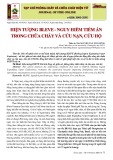

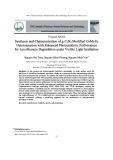
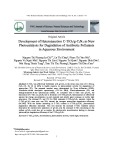
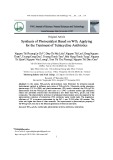




![Bài giảng Giáp xác chân mái chèo [mới nhất]](https://cdn.tailieu.vn/images/document/thumbnail/2025/20250927/lethihongthuy2402@gmail.com/135x160/92891759114976.jpg)



![Tài liệu học tập Chuyên đề tế bào [mới nhất]](https://cdn.tailieu.vn/images/document/thumbnail/2025/20250906/huutuan0/135x160/56151757299182.jpg)

